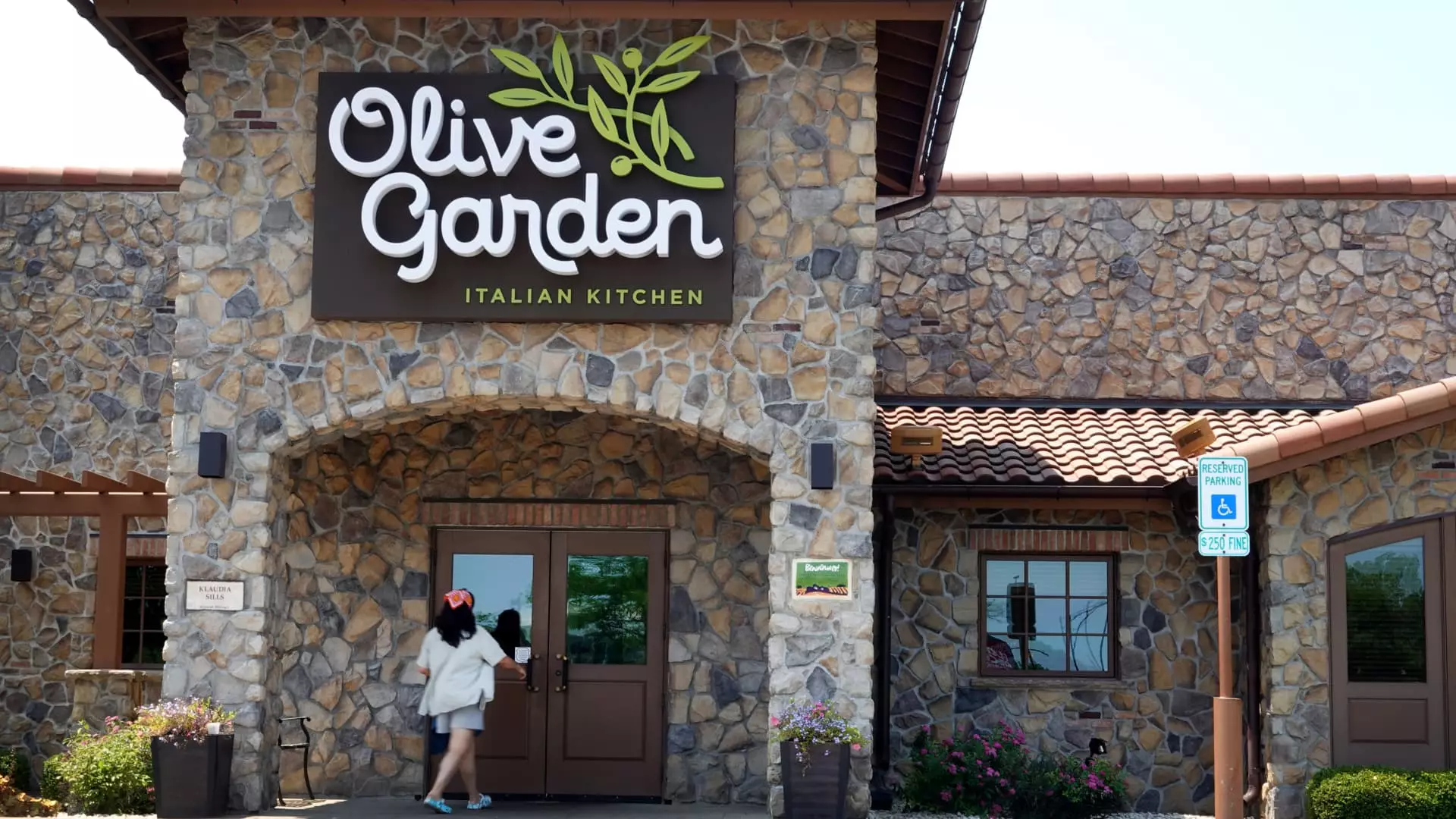Darden Restaurants, a prominent player in the casual dining sector, has recently unveiled its fiscal second-quarter earnings, demonstrating a blend of stability and adaptive strategies amid fluctuating market conditions. This article evaluates the company’s latest performance, delving into key figures, challenges, and strategic initiatives.
On Thursday, Darden reported quarterly earnings and revenue figures that resonated well with Wall Street expectations. The company recorded an earnings per share (EPS) of $2.03, surpassing the anticipated $2.02, while revenues reached $2.89 billion—slightly shy of the expected $2.90 billion. The net income came in at $215.1 million for the quarter, reflecting a modest year-on-year increase. Moreover, the company experienced a 6% rise in net sales, emblematic of the renewed consumer confidence observed in recent months.
Darden’s same-store sales growth also outperformed expectations, soaring by 2.4% against the projected 1.5%. Such positive signals indicate not only a recovery in consumer spending but also the effectiveness of Darden’s strategic efforts to refine its dining experience and marketing initiatives.
Particularly noteworthy is LongHorn Steakhouse’s performance, which showcased a remarkable same-store sales growth of 7.5%, substantially better than the expected 4.1%. This casual-dining endeavor continues to thrive, largely due to its competitive pricing and quality offerings, attracting a loyal customer base.
Conversely, Olive Garden, which holds significant importance for Darden, recorded a same-store sales increase of 2%, slightly edging past analysts’ predictions of 1.4%. This growth can be attributed to the revival of the “Never Ending Pasta Bowl” promotion and a strategic push into delivery services through a pilot partnership with Uber in select locations. These initiatives not only enhance customer satisfaction but also broaden market outreach, especially during this hyper-competitive dining environment.
However, Darden’s fine-dining segment, which includes prestigious establishments like The Capital Grille and Ruth’s Chris Steak House, faced some headwinds. The same-store sales plunged by 5.8%, a steeper decline than the anticipated 2.8%. Thus, it appears that the higher price points of these fine-dining offerings are deterring discretionary spending amidst a cautious consumer landscape. The shift in the Thanksgiving calendar further exacerbated this decline, affecting revenue potentially more severely than initially anticipated.
Strategic foresight is crucial in addressing the challenges Darden faces, not least of which are external factors such as recent hurricanes that prompted operational disruptions. While the impact was downplayed—with only one restaurant being temporarily closed—these unforeseen elements serve as a reminder of the vulnerability inherent in the restaurant industry. Darden’s leadership emphasized resilience, indicating that they view these challenges as integral to their learning process and strategic evolution.
The company’s decision to secure additional net new locations—39 in total, complemented by the acquisition of 103 Chuy’s restaurants—further demonstrates Darden’s commitment to growth and adaptability. The integration of Chuy’s, acquired for $605 million, is expected to enhance overall sales, although its performance will not be reflected in same-store sales metrics until fiscal 2026.
Darden has amended its fiscal 2025 outlook to reflect the inclusion of Chuy’s sales, raising total sales expectations to an impressive $12.1 billion, up from a prior estimate of $11.8 billion to $11.9 billion. The adjusted forecast for net earnings per share of $9.40 to $9.60 further solidifies investors’ confidence in the restaurant giant’s financial health and operational capabilities.
In summation, Darden Restaurants emerges from this quarter with a solid reputation for resilience amidst external pressures. They are facing the myriad challenges presented by changing consumer habits and market dynamics with agility. As the casual dining landscape evolves, Darden’s strategic initiatives may well herald a promising phase for the company, as they endeavor to not only meet but exceed their stakeholders’ expectations.

